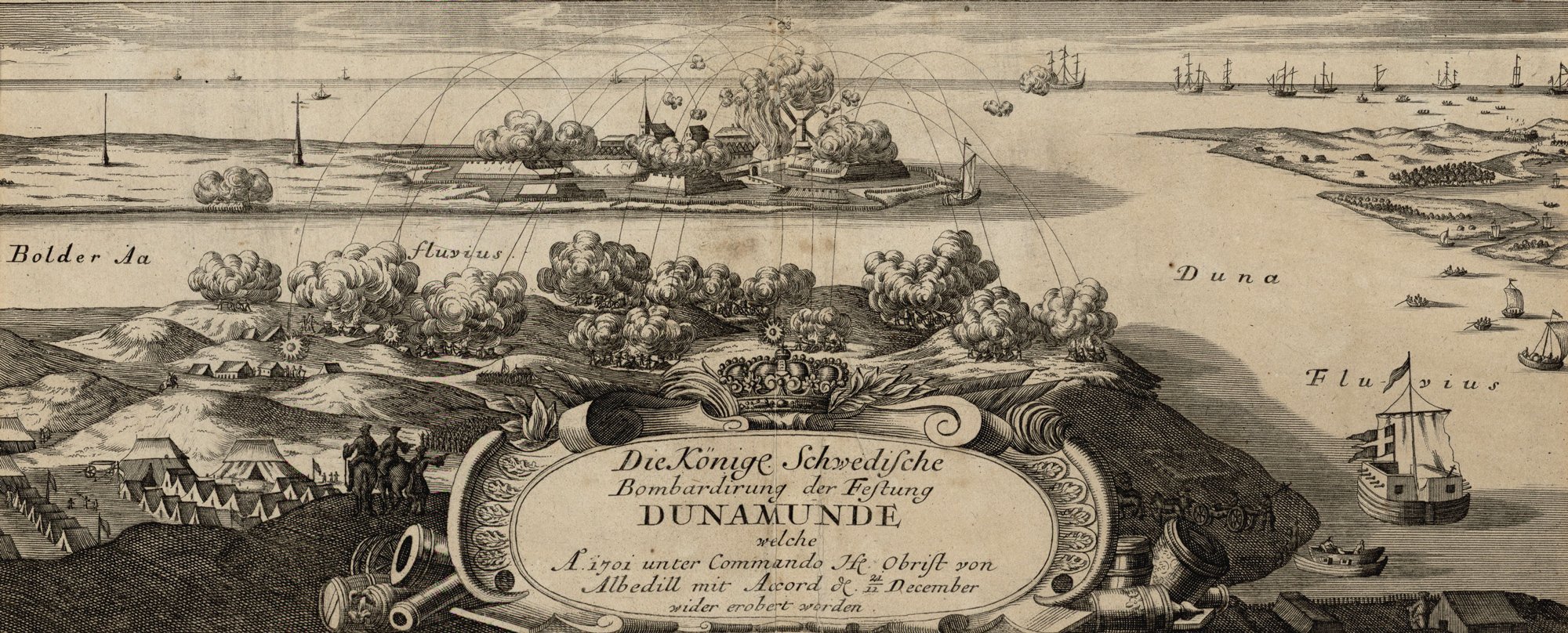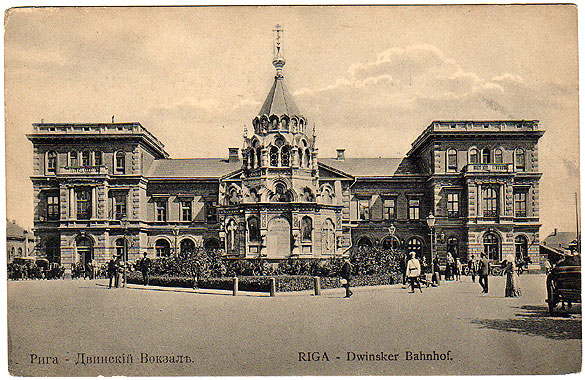|
Rīgas Satiksme
Rīgas Satiksme is a municipally-owned public transportation and infrastructure company serving Riga, Latvia and the surrounding areas. It was founded on 20 February 2003 as an Umbrella organization, umbrella organisation for the respective operators of trams, buses and trolleybuses in the city of Riga. Two years later, the separate operators of the different modes of public transport were merged and re-branded to its current name. Along with public transport services, Rīgas Satiksme also administers paid parking services throughout the city. It currently employs roughly 4,100 staff and its passengers completed 146.8 million rides in 2015. In 2018 the debt of Rīgas Satiksme reached nearly 300 million. Structure The company PLC "Rīgas satiksme" was founded on February 20, 2003, by merging the bus fleets "Imanta" and "Tālava". In January 2005, four PLCs of the Riga Municipality were merged — "Rīgas satiksme" (bus service), "Tramvaju un trolejbusu pārvalde" (electric trans ... [...More Info...] [...Related Items...] OR: [Wikipedia] [Google] [Baidu] |
Government-owned Corporation
A state-owned enterprise (SOE) is a government entity which is established or nationalised by the ''national government'' or ''provincial government'' by an executive order or an act of legislation in order to earn profit for the government, control monopoly of the private sector entities, provide products and services to citizens at a lower price and for the achievement of overall financial goals & developmental objectives in a particular country. The national government or provincial government has majority ownership over these ''state owned enterprises''. These ''state owned enterprises'' are also known as public sector undertakings in some countries. Defining characteristics of SOEs are their distinct legal form and possession of financial goals & developmental objectives (e.g., a state railway company may aim to make transportation more accessible and earn profit for the government), SOEs are government entities established to pursue financial objectives and devel ... [...More Info...] [...Related Items...] OR: [Wikipedia] [Google] [Baidu] |
Brasa Station
Brasa Station is a railway stop A railway stop is a spot along a railway line, usually between stations or at a seldom-used station, where passengers can board and exit the train. While a junction or interlocking usually divides two or more lines or routes, and thus has rem ... on the Zemitāni–Skulte Railway. References Railway stations in Riga Railway stations in Latvia opened in the 1870s Railway stations opened in 1872 {{Latvia-railstation-stub ... [...More Info...] [...Related Items...] OR: [Wikipedia] [Google] [Baidu] |
Piņķi
Piņķi is a village in Mārupe Municipality, Latvia Latvia ( or ; lv, Latvija ; ltg, Latveja; liv, Leţmō), officially the Republic of Latvia ( lv, Latvijas Republika, links=no, ltg, Latvejas Republika, links=no, liv, Leţmō Vabāmō, links=no), is a country in the Baltic region of .... Piņķi had 3,434 residents as of 2014. Towns and villages in Latvia Mārupe Municipality {{Vidzeme-geo-stub ... [...More Info...] [...Related Items...] OR: [Wikipedia] [Google] [Baidu] |
Pļavnieki
Pļavnieki is a Riga neighbourhood situated to the right of the river Daugava. Territory of the Pļavnieki for many centuries was used as agricultural land and was added to Riga only in 1974. The name "Pļavnieki" is derived from Latvian word "pļava" meaning meadow. Project of the new residential neighbourhood for 60,000 people was finished in 1978. Majority of the current residential buildings are built in 1980s. Pļavnieki is one of the most densely inhabited neighbourhoods in Riga. The total area of the Pļavnieki neighborhood is 2,985 km², which is approximately 2/5 less than the average neighborhood area in Riga. The length of the perimeter of the neighborhood borders is 7,664 meters. The boundaries of the Pļavnieki neighborhood in nature are clearly readable as they follow major roads. The current building structure in Pļavnieki largely differs from the building structure in neighboring neighborhoods. Pļavnieki is a densely populated neighborhood with predominantly 9 t ... [...More Info...] [...Related Items...] OR: [Wikipedia] [Google] [Baidu] |
Dārziņi
Dārziņi is a neighbourhood of Riga, the capital of Latvia, which is located in the Latgale Suburb. The neighbourhood mostly consists of summer homes The term summer colony is often used, particularly in the United States, to describe well-known resorts and upper-class enclaves, typically located near the ocean or mountains of New England or the Great Lakes. In Canada, the term cottage countr ... and small plant gardens for personal use, and it is the southernmost neighbourhood of Riga. Dārziņi were added to the city of Riga in 1968. Neighbourhoods in Riga {{Riga-stub ... [...More Info...] [...Related Items...] OR: [Wikipedia] [Google] [Baidu] |
Jugla, Riga
Jugla is a neighbourhood of Riga, the capital of Latvia. It is located in the Vidzeme Suburb, west of the Lake Jugla and southeast of the Lake Ķīšezers. Jugla is bordered by Čiekurkalns, Mežciems and Teika to the west, Dreiliņi to the southwest, Brekši to the southeast and Bukulti Bukulti is a neighbourhood of Riga, the capital of Latvia, located in the northeastern part of the Vidzeme Suburb. Demographics As of 2013, a survey was taken with residents of the neighbourhood and 62% said they enjoyed their life in Bukul ... to the east. Jugla is the location of Strazdumuiža Manor, first mentioned in 1528. References Neighbourhoods in Riga {{Riga-stub ... [...More Info...] [...Related Items...] OR: [Wikipedia] [Google] [Baidu] |
Vecmīlgrāvis
Vecmīlgrāvis is a neighbourhood in Riga, the capital of Latvia, located in the northern part of the city, about 12–14 km from the city centre. From 1203 until 1305 the present Vecmīlgrāvis territory belonged to the Daugavgrīva Abbey. In 1305 the abbey was sold to the Livonian Order The Livonian Order was an autonomous branch of the Teutonic Order, formed in 1237. From 1435 to 1561 it was a member of the Livonian Confederation. History The order was formed from the remnants of the Livonian Brothers of the Sword after the ... and later it was included in the estate of Mangaļi manor. In 1922 Vecmīlgrāvis was included in the territory of Riga, but a real connection with the city occurred after 1934 when the bridge over the Mīlgrāvis Canal was built. Neighbourhoods in Riga {{Riga-stub ... [...More Info...] [...Related Items...] OR: [Wikipedia] [Google] [Baidu] |
Daugavgrīva
Daugavgrīva (german: Dünamünde; pl, Dynemunt; russian: Усть-Двинск or ''Ust`-Dvinsk'') is a neighbourhood in North West Riga, Latvia on the left bank of the Daugava river. In this neighbourhood there is a Swedish-built fortress on the Daugava River's left bank, commanding its mouth. Fortress In Vecdaugava, on the right or opposite side of the Daugava (German: ''Düna'') outside the borders of the contemporary neighborhood, was in 1208 Dünamünde castle built by the Teutonic Knights, which initially served as a monastery. The Swedish fortress of Neumünde on the right bank, designed in a Dutch style by General Rothenburg in 1641, replaced the ruined Dünamünde Castle by 1680. In 1695 the Commandant was captain Heinrich Nicolaus Rüdinger, forefather of future Patriarch Alexy II of Russia. Rüdinger was knighted by Charles XI of Sweden. Joachim Cronman later became the Commandant and he died on March 5, 1703. After the fortress was seized by the Russi ... [...More Info...] [...Related Items...] OR: [Wikipedia] [Google] [Baidu] |
Riga Central Station
__NOTOC__ Riga Central Station ( lv, Rīgas Centrālā stacijа) is the main railway station in Riga, Latvia. It is known as the main point of Riga due to its central location, and most forms of public transport stop in this area. Part of the building is a shopping centre. Three rail mainlines depart the station to the east: * Riga–Skulte * Riga–Lugaži, through to the Estonian border crossing at Valka * Riga- Krustpils, which then splits into lines to Daugavpils and Zilupe, including international routes to the Russian, Belarusian & Lithuanian borders at Zilupe, & Turmantas. Two rail mainlines depart the station to the west: * Riga–Jelgava, including lines through to Liepāja & the Lithuanian border at Meitene * Riga–Tukums, including trains through to Ventspils History The first railway station in Riga was constructed to serve as the western terminal station of the new railway line from Riga to Daugavpils which was financed by British contractors and led by Bri ... [...More Info...] [...Related Items...] OR: [Wikipedia] [Google] [Baidu] |
Berģi
Berģi is a neighbourhood of Riga, the capital of Latvia Latvia ( or ; lv, Latvija ; ltg, Latveja; liv, Leţmō), officially the Republic of Latvia ( lv, Latvijas Republika, links=no, ltg, Latvejas Republika, links=no, liv, Leţmō Vabāmō, links=no), is a country in the Baltic region of .... The Ethnographic Open-Air Museum is located here. Neighbourhoods in Riga {{Riga-stub ... [...More Info...] [...Related Items...] OR: [Wikipedia] [Google] [Baidu] |
Riga Metro
The Riga Metro ( lv, Rīgas metro) was a planned metro system in Riga, Latvia, during the time of the Soviet Union. Three lines with a total of 33 stations were planned to be built by 2021, however in the late 1980s, during the Singing Revolution, the whole project met with opposition and combined with the fall of the Soviet Union, construction, which was planned to begin in 1990, never took place. The population of the city has been declining due to emigration and negative population growth rate since 1990, making the prospects of a full metro system, even with EU funding, unrealistic in the near future. In fact, after the fall of the Soviet Union, possible construction of the metro system has seldom been publicly discussed, even dismissed as unnecessary. History The idea of the Riga Metro emerged in the mid 1970s, when city planners were examining how to integrate traffic systems into the capital. Several concepts were proposed, including the reconstruction of the city's railwa ... [...More Info...] [...Related Items...] OR: [Wikipedia] [Google] [Baidu] |
Soviet Union
The Soviet Union,. officially the Union of Soviet Socialist Republics. (USSR),. was a transcontinental country that spanned much of Eurasia from 1922 to 1991. A flagship communist state, it was nominally a federal union of fifteen national republics; in practice, both its government and its economy were highly centralized until its final years. It was a one-party state governed by the Communist Party of the Soviet Union, with the city of Moscow serving as its capital as well as that of its largest and most populous republic: the Russian SFSR. Other major cities included Leningrad (Russian SFSR), Kiev (Ukrainian SSR), Minsk ( Byelorussian SSR), Tashkent (Uzbek SSR), Alma-Ata (Kazakh SSR), and Novosibirsk (Russian SFSR). It was the largest country in the world, covering over and spanning eleven time zones. The country's roots lay in the October Revolution of 1917, when the Bolsheviks, under the leadership of Vladimir Lenin, overthrew the Russian Provisional Government ... [...More Info...] [...Related Items...] OR: [Wikipedia] [Google] [Baidu] |



